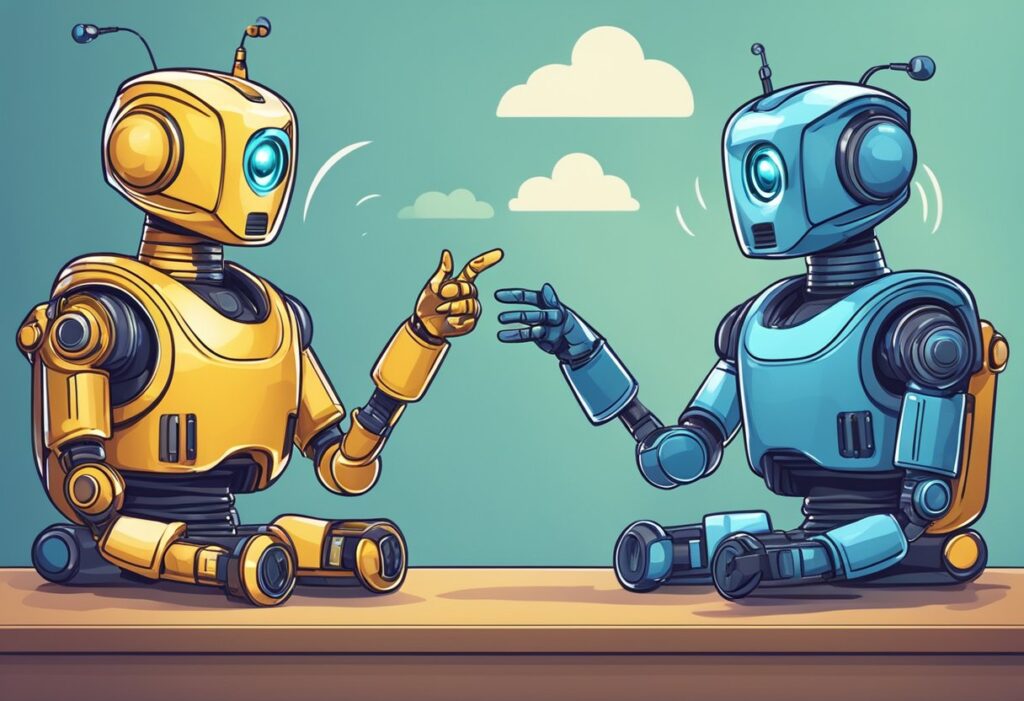AI in Business: How Chatbots Are Transforming Customer Interaction

In the rapidly evolving landscape of AI and business, chatbots have emerged as a powerful tool, revolutionizing how companies interact with customers. This article explores the role of chatbots, their underlying technologies, implementation processes, applications, challenges, and future trends. By delving deeper into these aspects, businesses can better understand and leverage chatbots to enhance their operations.
Understanding Chatbots
Chatbots are AI-driven programs designed to simulate human conversation. They can interact with users through text or voice, providing immediate responses and solutions.
- Types of Chatbots:
- Rule-Based Chatbots: Operate on predefined rules and scripts. They are ideal for handling simple and repetitive tasks.
- AI-Driven Chatbots: Utilize machine learning and natural language processing (NLP) to understand and respond to complex queries. These chatbots learn from interactions and improve over time.
Key Features and Capabilities:
- 24/7 availability
- Multilingual support
- Personalization
- Integration with various platforms (websites, social media, messaging apps)
Benefits of Using Chatbots in Business:
- Enhanced Customer Service: Chatbots provide quick and accurate responses, improving customer satisfaction.
- Cost Efficiency: Reduces the need for extensive human support staff.
- Increased Engagement: Keeps customers engaged through personalized interactions.
- Data Collection: Gathers valuable insights on customer behavior and preferences.
Core Technologies Behind Chatbots
- Natural Language Processing (NLP)
- NLP enables chatbots to understand, interpret, and respond to human language. It involves processes like tokenization, sentiment analysis, and entity recognition.
- Machine Learning (ML)
- Machine learning allows chatbots to learn from interactions and improve their responses. It involves training models using large datasets to recognize patterns and make predictions.
- Integration with Other AI Technologies
- Voice Recognition: Allows chatbots to understand and respond to voice commands.
- Sentiment Analysis: Helps chatbots gauge the emotional tone of a conversation and respond appropriately.
Implementation Process
Implementing chatbots involves several critical steps:
- Defining Business Objectives
- Identify key goals and use cases for the chatbot.
- Align chatbot implementation with the overall business strategy.
- Selecting the Right Chatbot Platform
- Criteria for Choosing a Platform: Consider factors like ease of use, scalability, integration capabilities, and support.
- Popular Chatbot Platforms:
- Dialogflow
- IBM Watson
- Microsoft Bot Framework
- Designing and Developing Chatbots
- Creating Conversational Flows: Map out potential interactions and responses.
- Training the Chatbot with Relevant Data: Use historical data to train the chatbot for better accuracy.
- Integration with Existing Systems
- Ensure compatibility with CRM, ERP, and other business systems.
- Smooth integration process to maintain operational continuity.
- Testing and Deployment
- Conduct rigorous testing to ensure performance and accuracy.
- Develop deployment strategies and continuously monitor the chatbot’s performance.
Use Cases and Applications

Chatbots are versatile tools with numerous applications across various business functions:
- Customer Service
- 24/7 Customer Support: Chatbots provide round-the-clock assistance, addressing common inquiries and issues.
- Handling Common Inquiries: Automates responses to frequently asked questions, freeing up human agents for more complex tasks.
- Sales and Marketing
- Lead Generation and Qualification: Chatbots can engage potential customers, qualify leads, and pass them on to sales teams.
- Personalized Recommendations and Upselling: Based on customer interactions and preferences, chatbots can suggest products and services.
- Human Resources
- Employee Onboarding and Training: Chatbots guide new employees through the onboarding process and provide training resources.
- Managing Internal Queries: Automates responses to HR-related questions, improving efficiency.
- E-commerce
- Guiding Users Through Purchase Processes: Assists customers in finding products, comparing options, and completing purchases.
- Providing Product Information and Support: Delivers detailed product information and post-purchase support.
Challenges and Solutions
While chatbots offer significant benefits, there are challenges to address:
- Ensuring Data Privacy and Security
- Compliance with Regulations: Adhere to data privacy laws such as GDPR and CCPA.
- Implementing Robust Security Measures: Protect sensitive customer data from breaches and misuse.
- Improving Accuracy and Understanding
- Continuous Training and Updating: Regularly update the chatbot’s knowledge base and algorithms to improve accuracy.
- Handling Complex Queries: Develop advanced NLP models to manage sophisticated interactions.
- Managing User Expectations
- Setting Realistic Expectations: Clearly communicate the chatbot’s capabilities to users.
- Providing Seamless Transition to Human Agents: Ensure a smooth handover to human support when necessary.
- Integration with Legacy Systems
- Addressing Compatibility Issues: Work with IT teams to ensure smooth integration with existing systems.
- Smooth Integration Process: Plan and execute the integration carefully to avoid disruptions.
Future Trends
The future of chatbots is bright, with several exciting trends emerging:
- Advanced Personalization
- Chatbots will leverage deeper data insights to offer highly personalized interactions.
- Enhanced Conversational Abilities
- Improved NLP and ML algorithms will enable more natural and fluid conversations.
- Integration with Augmented Reality (AR) and Virtual Reality (VR)
- Chatbots will provide immersive customer experiences through AR and VR technologies.
- Expanding Use Cases Across Industries
- Chatbots will find new applications in areas like healthcare, finance, and education.
Conclusion
Chatbots are transforming the landscape of AI and business, offering unparalleled efficiency, engagement, and customer satisfaction. By leveraging advanced technologies and thoughtful implementation, businesses can harness the power of chatbots to stay ahead in a competitive market. As these technologies continue to evolve, the potential for chatbots in business is boundless, promising a future of seamless and intelligent customer interactions.